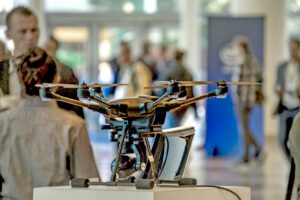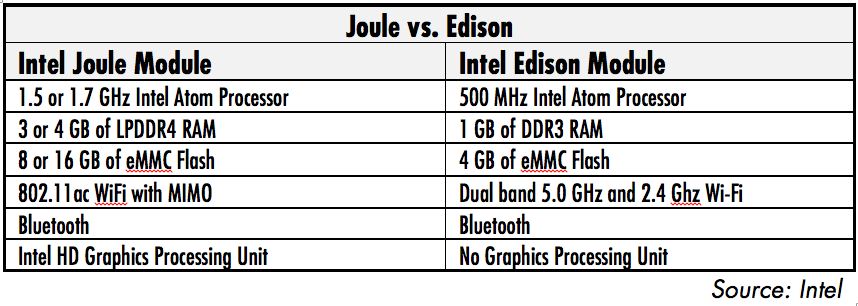The Internet of Things isn’t the most important part of Intel’s strategy, but the company seems to think it’s the most attention-getting part of Intel’s strategy.
Intel is making major shifts in its focus. Careful not to rattle investors or confuse developers and attendees, the opening keynote at this week’s Intel Developers Forum, from Intel CEO Brian Krzanich, offered few surprises, but rather served as a statement of position. Krzanich has abandoned the tactic of former Intel CEOs, which was to present processor technology advances, road maps, and tout inexorable fab advances as if to scare the competition into giving up.

Now, however, bigger, meaner, more powerful isn’t always an advantage when the automotive industry, the Internet of Things (IoT), smart cities, and smart manufacture all want/need low-power devices and long battery lives. Today the high performance computing (HPC) industry favors GPU-based parallel processing over Intel’s CPU-based sequential processing, and most of Intel’s competitors don’t even have fabs.
Krzanich chose to lead off with the Alloy, which utterly failed to elicit much interest from the audience of developers who assumed they were seeing yet another virtual reality (VR) headset until Krzanich mentioned that Microsoft’s RealSense technology is driving the Alloy and that Intel is every bit as interested in Mixed Reality (MR) as it is in VR and augmented reality (AR). So, just as the words “Microsoft Hololens” were forming as thought bubbles above the heads of the audience, Krzanich said Microsoft and Intel are collaborating on MR. Intel and Microsoft will work together and share technology including the APIs being created by the companies, and they plan to establish a Mixed Reality specification.

The Alloy is also interesting because Intel has developed it to be a self-contained unit with processing built in, including a Core i7 processor so the device can be untethered. As a mixed reality device, this makes sense. There’s less danger of running into walls and coffee tables. The plan is for Mixed Reality support to come to mainstream PCs and for the specification, including the RealSense API to be opened up to all developers.
Let’s get small
The IDFs in the Brian Krzanich era are notable for the introduction of small low-power processors, and platforms. This year’s event saw the introduction of the Joule platform for the Internet of Things. At IDF the Joule was demonstrated driving a robot, a smart bartender who could advise on one’s choice of drinks, but tragically had no arms with which to deliver them.

The Joule is a successor to the Edison and Galileo platforms and includes an Atom quad-core processor running at 1.7 GHz, 4 gigabytes of LPDDR4 RAM, a dual-band WiFi antenna, Bluetooth, and an Intel GPU – it’s a good list; it’s an amazing list when one sees how tiny the Joule is. Intel claims the Joule can handle advanced tasks such as computer vision and machine learning. Intel says the Joule platform includes a graphical user interface, which makes working with the system much easier than its predecessors.
The new platforms for RealSense will also find their way into Drones. At CES this year, Yuneec showcased the Typhoon H drone which is guided by a RealSense camera. Drone fans could buy a drone from Yuneec at the Intel shop for $1899. In addition, Krzanich announced Project Aero which includes a $399 Aero compute board, and an Aero Ready to Fly Drone kit, which comes with everything needed to build a drone. As of this writing, the Intel website says these kits will be available soon.
Emphasizing the point that RealSense is a family of products, Krzanich introduced several new members, including the Euclid development kit, a self-contained kit for makers, roboticists, and researchers. It’s a Linux platform with an Atom processor, wireless connectivity, current generation RealSense camera and several SDKs including gesture recognition.
Another member of the family made an appearance, the skinny new RealSense Camera 400 which Intel says doubles the number of 3D points captured per second and has double the operating range compared to the previous generation RealSense camera. The next gen RealSense Camera 400 will support indoor and outdoor use.
An important use case for Intel’s RealSense platforms and its processors is obviously automotive. To talk about Intel’s potential in the automotive industry, Krzanich introduced BMW’s Elmer Frickenstein who was driven in by a driverless BMW, which then went and presumably parked itself safely back stage. Frickenstein said BMW is committed to getting to a driverless cars by 2021. Intel and BMW’s collaboration, said Krzanich, has the goal of developing a standard for the automotive industry rather than simply developing a new product. Frickenstein said that to be able to transition the responsibility of driving from the driver to the computer, it will be necessary to build an end-to-end system—a system that operates inside the car and outside the car in the environment to track all cars, etc. “We need the best technology, the best partners, and the best collaboration.”
It may be a subtle distinction, but at this year’s IDF, Krzanich was not really there to sell drones or even processors, he was there to sell Intel as a company big enough to help define the new age of IoT with standards, partnerships, collaborations, technologies, and products. In that sense, the new Intel is a lot like the old Intel, which brought us x86, WiFi, USB, Bluetooth, Thunderbolt, WiDi and some stuff Intel would just as soon we forget about. Intel wants us to know, however, they’re big enough to play a major role in defining the next generation of computer technology.





